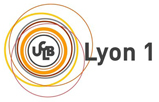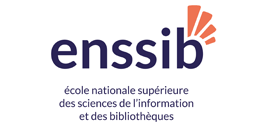Réseaux d’interactions pour le calcul et la gravité quantiques
Intervenants :
Etera Livine (Laboratoire de Physique, ENS de Lyon)
Pablo Arrighi (IMAG, Université Joseph Fourier, Grenoble, Laboratoire d’Informatique du Parallélisme, ENS Lyon)
Gilles Dowek (INRIA Saclay, Laboratoire d’Informatique de l’Ecole Polytechnique)
Programme :
| 10:30 | The principle of finite density of information, par Gilles Dowek |
|---|---|
| 11:30 | Pause café |
| 11:45 | A quantum Game of Life, par Pablo Arrighi |
| 12:30 | Pause déjeuner : vin et fromage |
| 13:30 | Spinfoams and Loop Quantum Gravity: Space-time Geometry from Random Graphs, par Etera Livine |
Résumés
The principle of finite density of information
Gilles Dowek.
Some arguments in favor of the hypothesis of a computable universe are based on two symmetric hypotheses of a finite velocity and finite density of information. I will try in this talk to investigate the impact of the second on the algebraic formalism used to describe quantum theory. I will compare this hypothesis to related ideas in the theory of formal languages : in both cases emerges a notion of an actual but modest infinite.
A Game of Life: quantum cellular automata and universality
Pablo Arrighi
I will present the field of Quantum Computation in elementary terms; and then explain how to extend the cellular automata model, which is quite popular in Complex Systems sciences, so that in can now account for Quantum Computation distributed in space and time. In particular, I will present a simple quantum cellular automata which is capable of simulating all the others in a space-preserving manner. I will discuss why this Computer Science notion of universality could become strongly relevant for theoretical physics.
Spinfoams and Loop Quantum Gravity: Space-time Geometry from Random Graphs
Etera Livine
I will review the long-standing problem of quantum gravity and the construction of a consistent physical theory describing the structure of space-time at the smallest length scales. Focusing on loop quantum gravity and spinfoams, it appears that the quantum space-time can be seen as made from microscopic fundamental blocks glued together. These blocks glue themselves to each other along random graphs, then generating a space-time structure which will look continuous, smooth and flat at large scales. I will describe the full theory and various toy-models that illustrate this emergence of the space-time geometry from these microscopic degrees of freedom.










